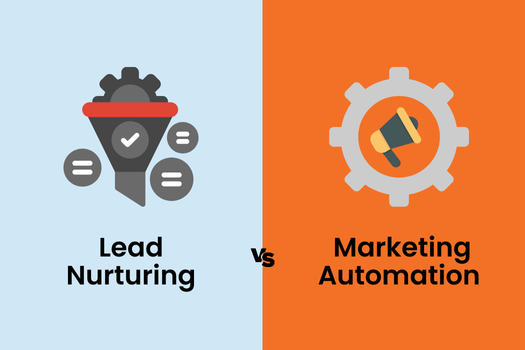X is usually the first platform on which topics go viral before they spread to other social media platforms. But how can affiliate marketers use X for monetization?
First, it is easier to go viral on X than on many other platforms. The platform has 320 million active monthly users who are always waiting for new content to retweet, whether news, memes, or famous cultural moments.
What is more important is that tweeting the right thing at the right time can attract thousands. Another advantage for affiliate marketers is that there are X bots ; 66% of the links on X are shared by bots, which cannot participate in discussions.
This blog will discuss the possibility of affiliate marketing on X and provide ways to maximize its advantages and minimize its disadvantages.
Whether you are just starting your journey in affiliate marketing or seeking to improve your performance, this blog will provide you with many insights.
What is affiliate marketing on X?
Affiliate marketing on X is the practice of promoting products or services to your X followers through affiliate links. You receive a commission when a follower clicks your link and completes a purchase.
This form of marketing allows you to monetize your X presence by recommending products that align with your audience's interests. The key difference between X affiliate marketing and other platforms is the medium's fast-paced, conversational nature.
With only 280 characters per tweet, your approach must be concise, engaging, and strategic. This limit helps you get to the point of your message and enables you to think of creative ways to share your affiliate deals.
However, the platform is active and demands swift action to capitalize on trending topics. Partnering with a X marketing services agency ensures timely responses, maximizing visibility and engagement before the opportunity fades.
Guide to X affiliate marketing

X affiliate marketing involves promoting products or services via tweets using affiliate links to earn commissions on sales.
It requires engaging content, strategic hashtags, and consistent follower interaction to drive traffic and conversions. Here’s what you need to do to get started:
Find Your X Niche
Successful affiliate marketing on X begins with identifying the right niche. Unlike broader platforms, X prefers specificity. To find your niche:
Analyze your existing audience
What topics do your current followers engage with most? Utilize X Analytics to understand your audience's interests and behaviors.
Explore X trends
Use the 'Explore' page to discover popular conversations in your area of interest. Pay attention to recurring themes and topics that generate significant engagement.
Research hashtags
Identify active, niche-specific hashtags that align with potential affiliate products. Tools like Hashtagify can help you discover related hashtags and their popularity.
Evaluate market demand
Use tools like Google Trends or keyword research to assess your chosen niche's overall product demand.
Remember, the goal is to become a trusted voice in a specific area rather than a generalist trying to appeal to everyone. A focused niche allows you to create specific content and affiliate offerings more effectively, leading to higher engagement and conversion rates.
How do you engage and gain followers?
Building a loyal following is crucial for successful affiliate marketing on X. Here are strategies to grow your audience organically:
Optimize Your Profile
- Use a clear, professional profile picture that represents you or your brand.
- Write a concise, engaging bio highlighting your niche expertise and incorporating related keywords
- Add a redirecting link to your website or landing page.
- Pin a tweet that showcases your best content or current promotion.
- Use a header image that reinforces your niche or brand.
Consistent Posting Schedule
- Tweet regularly, aiming for 5-10 tweets per day.
- Leverage a scheduling tool like TweetDeck or Hootsuite to maintain consistency.
- Try posting at various times to identify when your audience is most engaged.
- Mix up your content types: original tweets, retweets, replies, and multimedia content.
Engage Authentically
- Respond to comments and mentions promptly.
- Participate in relevant X chats.
- Retweet and comment on posts from influencers in your niche.
- Ask questions to encourage dialogue with your followers.
- Use X polls to boost engagement and gather insights.
Create Valuable Content
- Share industry insights, tips, and news.
- Your content should contain text, images, and videos.
- Craft threads for in-depth topics.
- Create and share relevant content from other sources.
- Create X Moments to highlight your best content or industry events.
Leverage Hashtags Strategically
- Use 1-2 relevant hashtags per tweet.
- Create a branded hashtag for your content.
- Participate in trending hashtags when appropriate.
- Research niche-specific hashtags to reach your target audience.
- Avoid overusing hashtags, which can make your tweets look spammy.
Collaborate with Others
- Mention and tag other users in relevant posts.
- Participate in X Spaces or host your own.
- Consider co-creating content with complementary accounts.
- Engage in cross-promotion with non-competing accounts in your niche.
- Participate in or organize X chats related to your niche.
Utilize X Ads
- Consider using X's promoted tweets to reach a wider audience.
- Target your ads based on specific interests, keywords, and demographics.
- Try retargeting to reach users who have engaged with your content before.
- Test different ad formats, such as promoted accounts or X cards.
Remember, building a X following takes time and consistent effort. Here are some X marketing examples to get you started. Focus on providing value and engaging genuinely with your audience rather than solely promoting affiliate products.
Pros and cons of X affiliate marketing
Pros
- Every day, 500 million Tweets are sent by 300+ million active users.
- 10% of users are responsible for posting 80% of all Tweets—you can join that 10%.
- You only need to create a 280-character affiliate marketing pre-sell.
- Compared to Facebook or Instagram, X could be more used by affiliates.
- X has a user-friendly interface that makes it accessible to everyone.
- Affiliate programs are still supported on X.
Cons
- Gradually, it is transforming into a hub for online controversies.
- The degree of intent to monetize needs to be more questionable.
- They automatically restrict any links they categorize as “unsafe.”
- The 280-character limit can often feel too restrictive.
Let’s break through your revenue hurdles
We find your primary growth blockers, build expert-led strategies, and provide custom data-driven solutions to help you hit your revenue goals.
9 Tips for Affiliate Marketing on X
Creating credibility in affiliate marketing with X involves strategically placing links in your profile and content. Balancing link usage is crucial: too few links may go unnoticed, while too many can appear overly salesy and deter followers.
Here are 9 Tips for Affiliate Marketing:
1. Your profile is your landing page
Most users will view your profile before following you. Optimize your profile to serve as a landing page for your brand. Make sure it answers these questions:
Are you credible?
Display your expertise with a website link, job title, or association.
Are your CTAs clear?
Your content should be interesting or valuable. Describe the kind of content people can expect from you in your bio.
Are you credible?
Make it easy for your audience to find more information if they trust you.
2. Use your pinned tweet strategically
A pinned tweet will stay at the top of your profile, making it perfect for showcasing promotions. Use it for evergreen offers or change it according to trends and seasons.
Ensure your pinned tweet is clear, concise, visually appealing, and contains a single link.
3. Link your content, not just direct affiliate links
Overusing affiliate links can drive your audience away. Instead, promote content that drives traffic to your website and optimizes it for affiliate commissions. Provide value first to build trust and monetize more effectively.
4. Make your content retweetable
Use visual content like infographics and videos, which stand out on X. Quotes, statistics, tips, and insights work well as standalone pieces, encouraging retweets and engagement.
5. Find the right products
Understand your audience and their needs. Promote products that match your audience's interests and are relevant to the X platform. Select products that accomplish a goal or solve a problem for your audience.
6. Use threads to tell stories and offer context.
Threads, which tie multiple tweets together, are perfect for storytelling. Use them to engage your audience and provide context before presenting your affiliate link. Place your link in the first or last tweet of the thread for better visibility.
7. Stay in the moment
X is biased toward timely content. Share news, partnerships, and deals that create a sense of urgency. This encourages immediate action from your audience.
8. Take advantage of Livestream and Spaces
Engage with your audience through Livestream and Spaces, X’s video and audio conversation features. Use these platforms for long-form content that covers topics in-depth, offering a human element to your X strategy.
9. Have a conversation
Engage in relevant threads to spark interest in your offer. Offer your link to those who show genuine interest. This method is time-intensive but effective, especially for building an audience from scratch.
Conclusion
Affiliate marketing on X can be quite effective if you're ready to keep up with its quick and concise style. However, you must be consistent, creative, and care about your audience to do well.
You should also earn your followers' trust, be open about your affiliate partnerships, and only share products you stand behind.
You can also try twitter influencer marketing to make the most out of Affiliate marketing on X. By tapping into X's unique features and keeping it real, you can transform your account into a potent affiliate marketing tool.
Are you considering starting affiliate marketing on X, or do you want to take your affiliate marketing strategy to the next level? Contact Saffron Edge for exceptional guidance and support to amplify your success! Let's make it happen!
Outshine Your Competition Faster
Related Blogs
We explore and publish the latest & most underrated content before it becomes a trend.
7 min read
Lead Nurturing vs. Marketing Automation: Key Differences and How They Work Together
By Sabah Noor3 min read
Explore these Powerful Facebook Marketing Strategies for Your Restaurant
By Vibhu Satpaul
Subscribe to Saffron Edge Newsletter!

Outshine Your Competition Faster










